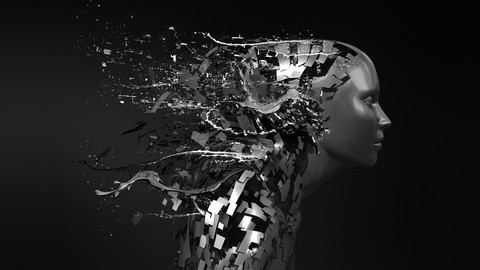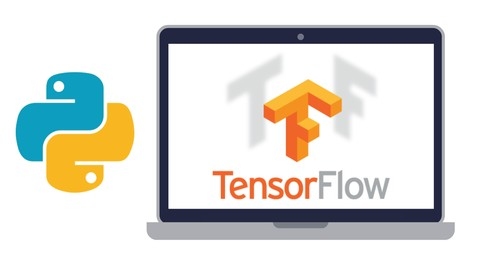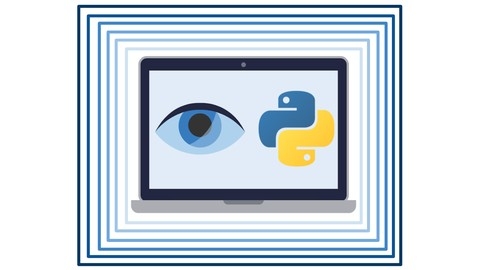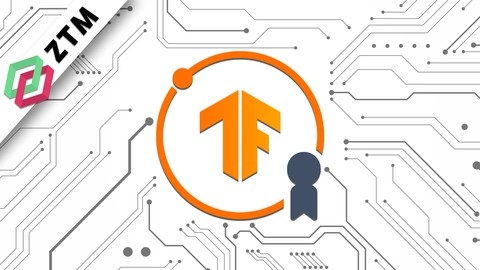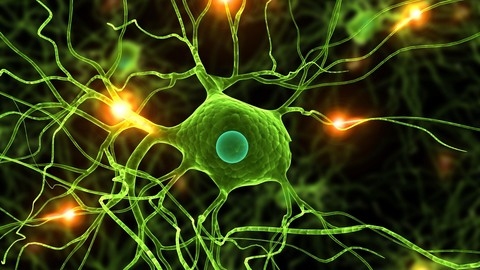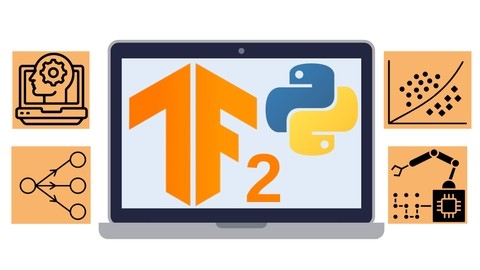Deep learning is a powerful branch of artificial intelligence (AI) that involves training artificial neural networks to learn from data.
By mimicking the structure and function of the human brain, these networks can achieve remarkable results in image recognition, natural language processing, and more.
Mastering deep learning opens doors to exciting careers in AI, allowing you to build innovative solutions and contribute to cutting-edge research.
Finding a high-quality deep learning course that truly delivers on its promises can be a daunting task.
With so many options available, it’s easy to feel overwhelmed and unsure where to start.
You’re looking for a course that goes beyond theory, providing practical experience and hands-on projects to solidify your understanding.
We’ve reviewed countless courses and based on our analysis, Deep Learning A-Z 2024: Neural Networks, AI & ChatGPT Prize is the best course overall.
This comprehensive course combines deep learning fundamentals with practical applications, ensuring you gain the skills needed to succeed in the field.
It also includes valuable resources like installation tips and debugging advice, making it a great choice for both beginners and experienced learners.
But if you’re looking for something more tailored to your specific needs, we have plenty of other options to explore.
Whether you’re interested in TensorFlow, Keras, or natural language processing, we’ve got you covered.
Keep reading for our full list of recommendations and find the perfect deep learning course for your journey.
Deep Learning A-Z 2024: Neural Networks, AI & ChatGPT Prize
Starting with an introduction to deep learning, the course quickly moves into practical applications, ensuring you understand the significance and potential of this technology.
The curriculum is divided into focused sections, each dedicated to a key aspect of deep learning.
You’ll start with Artificial Neural Networks (ANNs), learning about neurons, activation functions, and essential processes like gradient descent and backpropagation.
The course then guides you through Convolutional Neural Networks (CNNs) for image recognition, Recurrent Neural Networks (RNNs) for processing sequences, and dives into Self Organizing Maps (SOMs) and Boltzmann Machines for advanced modeling techniques.
A unique feature of this course is its hands-on approach, offering datasets, step-by-step tutorials, and challenges that allow you to apply what you’ve learned.
Additionally, the integration of ChatGPT as a learning tool provides an interactive experience to reinforce your understanding.
By the end, you’ll have practical experience in building and evaluating deep learning models, preparing you for a career in AI or enhancing your personal projects.
Deep Learning Prerequisites: The Numpy Stack in Python (V2+)
Starting with a clear introduction, it sets expectations on the learning outcomes and the practical application of skills acquired.
The course covers Numpy, introducing essential concepts like arrays, dot products, and matrices, which are foundational for numerical computations in Python.
Following Numpy, you’ll explore Matplotlib for data visualization, learning to create impactful charts and plots.
The Pandas section equips you with skills for data manipulation and analysis, crucial for handling real-world data sets.
Scipy is also covered, focusing on scientific computing techniques that are vital in machine learning tasks.
Practical exercises after each section provide hands-on experience, reinforcing your learning and preparing you for applying these skills in machine learning projects.
The course also addresses setting up your environment, ensuring you’re ready to use tools like TensorFlow and Theano, and offers Python coding assistance for beginners.
Complete Guide to TensorFlow for Deep Learning with Python
The course starts by introducing machine learning, artificial neural networks, and deep learning fundamentals.
You’ll get a crash course on essential Python libraries like NumPy, Pandas, and scikit-learn for data preprocessing and visualization.
The course then teaches you to create neural networks manually in Python and TensorFlow, helping you understand how they work.
You’ll learn about perceptrons, activation functions, cost functions, gradient descent backpropagation, and more.
From there, you’ll explore TensorFlow’s core features like syntax, graphs, variables, and placeholders.
The instructor provides hands-on examples for building neural networks with TensorFlow for regression and classification tasks.
Next, you’ll learn advanced neural network architectures like Convolutional Neural Networks (CNNs) for image data like MNIST, and Recurrent Neural Networks (RNNs) for sequences like text and time series.
Essential RNN components like LSTMs and GRUs are covered to handle vanishing gradients.
The course also covers unsupervised learning with autoencoders for dimensionality reduction, as well as cutting-edge Generative Adversarial Networks (GANs) for generating data.
You’ll leverage TensorFlow’s higher-level APIs like Estimator and Keras for efficiency, and use TensorBoard for visualization.
Additionally, you’ll apply reinforcement learning concepts to OpenAI Gym environments, training agents through trial-and-error.
Practical exercises and projects solidify your learning, with detailed solutions provided.
Tensorflow 2.0: Deep Learning and Artificial Intelligence
This comprehensive guide to TensorFlow 2.0 covers deep learning and artificial intelligence extensively.
You’ll gain practical coding experience from the outset, working with real datasets and leveraging free GPU/TPU resources on Google Colab to train advanced models effortlessly.
The course begins by explaining core machine learning concepts like neurons and how models learn.
You’ll then build feedforward artificial neural networks (ANNs) for image classification and regression tasks.
Mastering convolutional neural networks (CNNs), you’ll apply them to image data like CIFAR-10 and Fashion MNIST, incorporating techniques like data augmentation and batch normalization.
For sequence data like time series, you’ll explore recurrent neural networks (RNNs) including LSTMs and GRUs, covering applications in forecasting, text classification, and using RNNs for image tasks.
Natural language processing (NLP) is comprehensively covered, delving into embeddings, text preprocessing, and utilizing CNNs/RNNs for NLP tasks.
Other key topics include recommender systems, transfer learning for computer vision, generative adversarial networks (GANs), and deep reinforcement learning theory/applications like a stock trading agent.
You’ll learn low-level TensorFlow usage, building custom models, loss functions, optimization methods like Adam, and distributed training strategies.
Deploying models as web services using TensorFlow Serving and TensorFlow Lite for mobile apps is also covered.
Throughout, you’ll find helpful tips on setting up environments, using Python/Jupyter, effective learning strategies, and preparing for the TensorFlow Developer Certificate exam.
Python for Computer Vision with OpenCV and Deep Learning
The course starts by covering the fundamentals of working with images using NumPy and Jupyter Notebooks.
You’ll learn how to open, display, and draw on images programmatically.
From there, it dives into using the powerful OpenCV library for image processing tasks like blending, thresholding, blurring, and calculating gradients and histograms.
This gives you a solid grounding in core computer vision techniques.
The course then moves into video basics, teaching you how to connect to a camera feed and process video frames.
You’ll learn object detection algorithms like template matching, corner detection, edge detection, and contour finding.
Next up is object tracking, covering optical flow methods as well as algorithms like MeanShift and CamShift.
You’ll get experience with OpenCV’s tracking APIs.
The real highlight is the deep learning section.
It covers machine learning fundamentals, neural networks, backpropagation, and cost functions.
You’ll use Keras to build convolutional neural networks on datasets like MNIST and CIFAR-10.
The course even guides you through training a CNN on your own custom image data.
Finally, you’ll apply everything you’ve learned in a capstone project involving object segmentation and counting.
There’s also a bonus section covering the powerful YOLO object detection algorithm.
TensorFlow Developer Certificate Bootcamp
The course starts by introducing you to the fundamentals of deep learning, neural networks, and TensorFlow.
You’ll learn how to create and manipulate tensors, which are the building blocks of TensorFlow models.
This section covers essential concepts like tensor operations, matrix multiplication, and data types.
Next, you’ll dive into building neural network models for regression and classification problems using TensorFlow.
You’ll learn how to preprocess data, create model architectures, train models, and evaluate their performance using metrics like mean squared error and confusion matrices.
The course covers techniques like feature scaling, data augmentation, and non-linearity to improve model performance.
The course then moves on to computer vision and convolutional neural networks (CNNs).
You’ll learn how to build and train CNNs for image classification tasks, including techniques like transfer learning and fine-tuning pre-trained models.
You’ll also learn how to make predictions on custom images using your trained models.
Natural language processing (NLP) is another major topic covered in the course.
You’ll learn how to preprocess text data, convert it into numerical representations, and build models like recurrent neural networks (RNNs) and 1D CNNs for tasks like sentiment analysis and text classification.
The course also covers time series forecasting with TensorFlow, which is essential for predicting future values based on historical data.
You’ll learn how to prepare time series data, build models like LSTMs and N-BEATS, and evaluate their performance using metrics like MASE.
Throughout the course, you’ll work on several milestone projects that allow you to apply what you’ve learned to real-world problems.
These projects include building a food vision model, an NLP model for medical abstracts, and a Bitcoin price forecasting model.
As you progress through the course, you’ll also learn about advanced topics like transfer learning, feature engineering, and ensemble models.
The course also includes a section dedicated to preparing you for the TensorFlow Developer Certification exam.
Data Science: Deep Learning and Neural Networks in Python
The course starts with a review of the fundamentals of neural networks and machine learning.
You’ll learn about neurons, how they make predictions, and how they are trained.
This lays the groundwork for understanding neural networks from the ground up.
Next, it dives into the core concepts of neural networks like the softmax function for multi-class classification.
You’ll code an entire feedforward neural network in Python from scratch, a great way to solidify your understanding.
The course then focuses on training neural networks using the backpropagation algorithm.
You’ll derive the math behind backpropagation and implement it in code using Python libraries like Numpy.
This is a crucial step in mastering how neural networks learn.
Practical considerations like choosing activation functions, tuning hyperparameters, and using cross-validation are covered.
You’ll learn how neural networks automatically learn discriminating features, a key advantage over traditional machine learning.
The syllabus also includes using libraries like TensorFlow for building and visualizing neural networks.
You’ll get exposure to state-of-the-art tools used in deep learning.
The course wraps up with a project on facial expression recognition, giving you hands-on experience applying what you’ve learned.
There are also supplementary lectures diving deeper into backpropagation for those interested.
Complete Tensorflow 2 and Keras Deep Learning Bootcamp
This comprehensive course covers everything you need to know, from the fundamentals to advanced topics like Generative Adversarial Networks (GANs).
You’ll start with crash courses on NumPy, Pandas, and data visualization using Matplotlib, ensuring you have a solid foundation.
The course then dives into machine learning concepts, including supervised and unsupervised learning, overfitting, and performance evaluation metrics.
Next, you’ll learn how to build basic Artificial Neural Networks (ANNs) for classification and regression tasks.
The course covers key concepts like perceptrons, activation functions, cost functions, gradient descent, and backpropagation.
You’ll also explore the differences between TensorFlow and Keras syntax.
The course dedicates significant time to Convolutional Neural Networks (CNNs) for image data.
You’ll work with popular datasets like MNIST and CIFAR-10, learning about image filters, kernels, convolutional layers, and pooling layers.
Additionally, you’ll tackle real-world image files, from data preprocessing to model evaluation.
Recurrent Neural Networks (RNNs) are covered in-depth, including handling sequence data, vanishing gradients, LSTMs, and GRUs.
You’ll apply RNNs to tasks like forecasting sine waves and time series analysis.
Natural Language Processing (NLP) is another major topic, where you’ll learn text processing, batch creation, and generating text using neural networks.
The course also explores autoencoders for dimensionality reduction and image noise removal, as well as GANs for generating images.
Finally, you’ll learn how to deploy your models as APIs or websites using Flask, enabling you to share your work with others.
Throughout the course, you’ll work on hands-on exercises and projects, ensuring you gain practical experience with the concepts covered.
The instructor provides detailed solutions, so you can compare your work and reinforce your understanding.
Natural Language Processing with Deep Learning in Python
The course starts with foundational steps, including a guide on how to navigate the course successfully, access the necessary code and data, and specific advice for Windows users on file management.
This preparation sets a solid ground for what’s to come.
For those new to NLP, there’s a dedicated section on word vectors.
Here, you’ll explore the concept of vectors, word analogies, and how to leverage pre-trained word vectors from GloVe and word2vec.
Understanding word vectors is critical as they form the backbone of NLP tasks.
Building on this foundation, the course revisits language modeling and neural networks.
You’ll get a refresher on bigrams, language models, and their implementation.
This review is crucial for reinforcing your knowledge or bringing you up to speed.
The course then advances to word embeddings, focusing on Word2Vec and GloVe.
You’ll engage with techniques like CBOW, Skip-Gram, and negative sampling, and apply these models using Numpy and TensorFlow.
This hands-on approach not only solidifies your understanding but also equips you with practical skills.
Moreover, the course tackles how to apply neural networks to solve NLP problems, such as Parts-of-Speech (POS) tagging and Named Entity Recognition (NER).
You’ll dive into both the theoretical background and practical implementation in Theano and TensorFlow, broadening your toolkit.
For those interested in cutting-edge topics, the course introduces Recursive Neural Networks (Tree Neural Networks), essential for parsing complex sentence structures.
You’ll learn to construct these networks and apply them to real-world scenarios.
Additionally, the course includes sections on setting up your environment, understanding Theano and TensorFlow basics, and extra Python coding help for beginners.
This comprehensive support ensures you have everything you need to progress confidently.
The course concludes with strategies for effective learning in machine learning and an appendix/FAQ section addressing common questions.
Deep Learning and Computer Vision A-Z + AI & ChatGPT Prizes
The course starts with an introduction to face detection using the Viola-Jones algorithm.
You’ll learn about key concepts like Haar-like features, integral images, training classifiers with Adaboost, and cascading.
Then you’ll apply this knowledge to build a face detector using OpenCV.
Next up is object detection intuition, covering the Single Shot Detector (SSD) approach.
You’ll dive into multi-box predictions, handling different scales, and more.
After grasping the theory, you’ll implement an SSD object detector from scratch.
The third module explores Generative Adversarial Networks (GANs) - how they work, their applications, and building a GAN model to generate images.
This cutting-edge technique allows you to create realistic synthetic data.
But that’s not all!
The course also has annexes covering the fundamentals of artificial neural networks and convolutional neural networks in-depth.
From neurons and activation functions to convolutions, pooling, and backpropagation - you’ll build a solid theoretical foundation.
Throughout the course, you’ll work on hands-on projects like a happiness detector and detecting objects in Monument Valley scenes.
The lectures provide step-by-step guidance, installation tips, and common debugging advice.
You’ll also get access to supplementary resources like PDFs and URLs for further learning.
And if you get stuck, there’s an FAQ/Q&A section to help resolve issues.
Also check our posts on:
